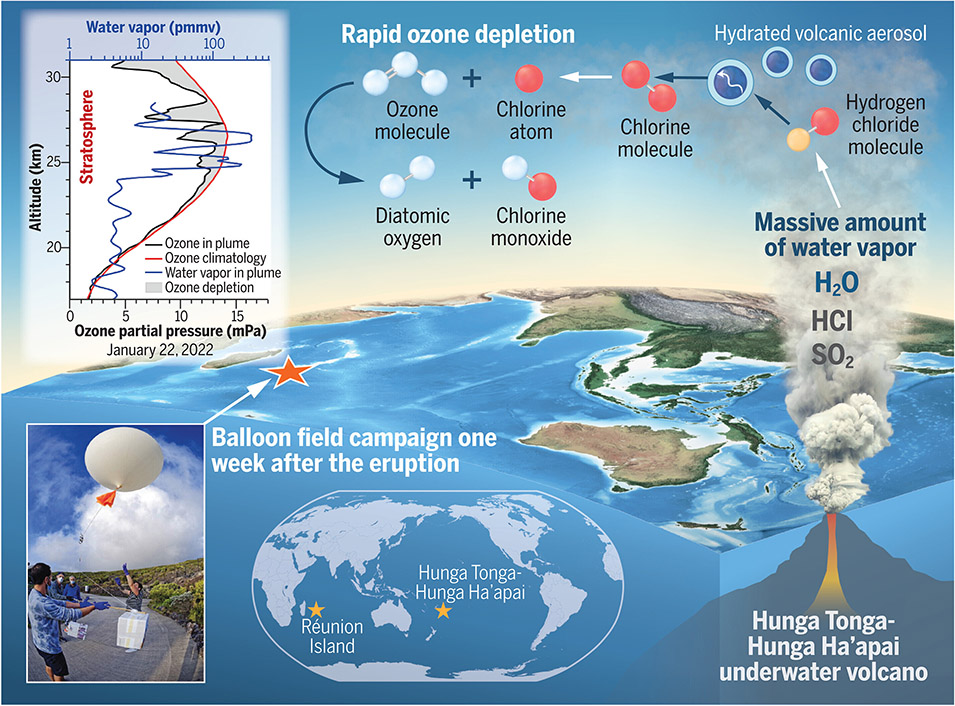
New research by a group of atmospheric specialists showed that the Hunga-Tonga Hunga-Ha’apai (HTHH) volcanic eruption caused a massive loss to the ozone layer (O3), - a result never seen before.
It showed that the HTHH eruption from last year, injected more water (H2O) vapour than has ever been observed in the satellite era.
To better understand the HTHH volcanic plume’s impact on O3, the atmospheric specialists used a combined balloon measurements, zenith sky observations, and satellite data.
The balloon observations, conducted near the Réunion Island, revealed the unprecedented amount of water vapour injected by the volcano. The enhanced stratospheric humidity, radiative cooling, and expanded aerosol surface area in the volcanic plume, created the ideal conditions for swift ozone depletion of 5% in the tropical stratosphere in just one week.
This tropical O3 decrease exceeds that of previous eruptions, underscoring the HTHH event’s exceptional nature, the scientists said.
"This study enhances our understanding of the effect of this unusual volcanic eruption on stratospheric chemistry and provides insights into possible chemistry changes that may occur in a changing climate."
The HTHH eruption’s unusual features, notably its high injection altitude of aerosol precursors and large amounts of H2O vapor, yield invaluable insights into stratospheric chemistry perturbations after this major event.
The volcanic injection of H2O vapor, consists of sulfur dioxide (SO2), and hydrochloric acid HCl, prompting rapid chlorine activation on hydrated volcanic aerosol and O3 depletion in the stratosphere.
Research article https://www.science.org/doi/10.1126/science.adg2551#



